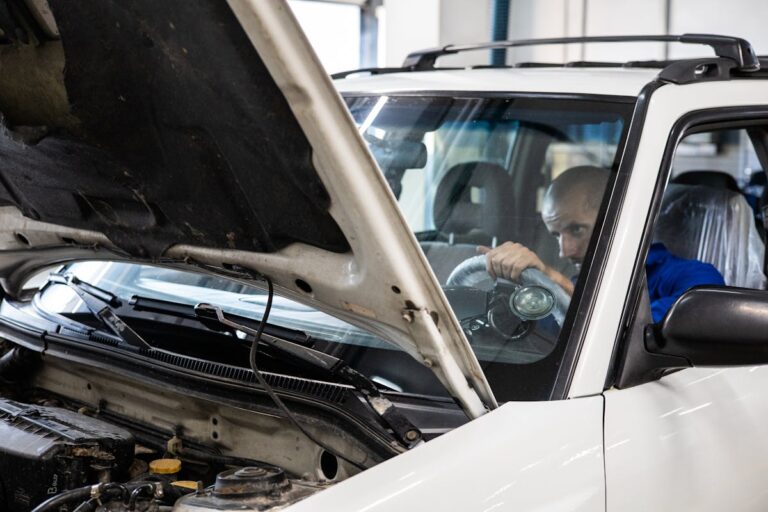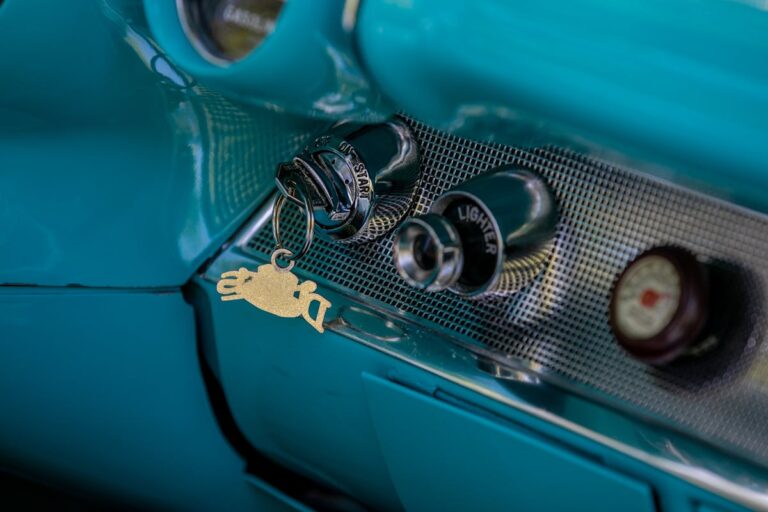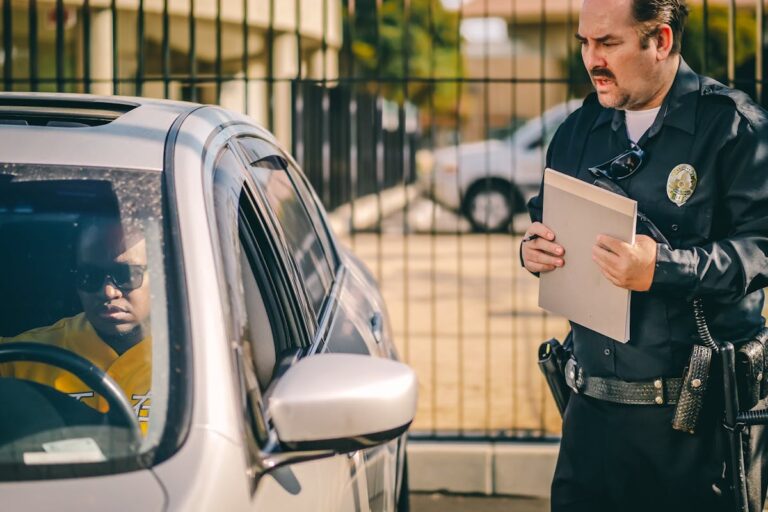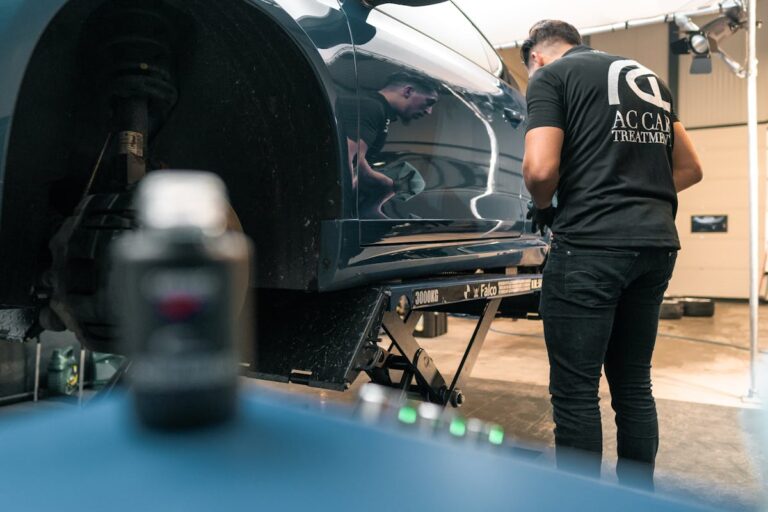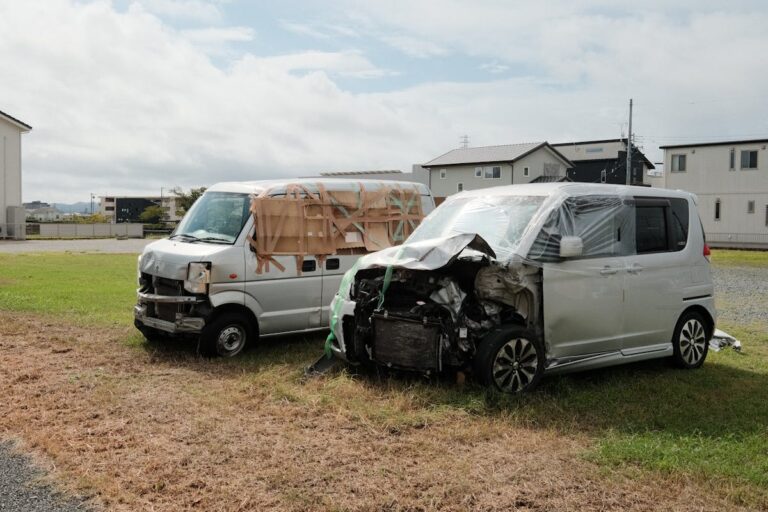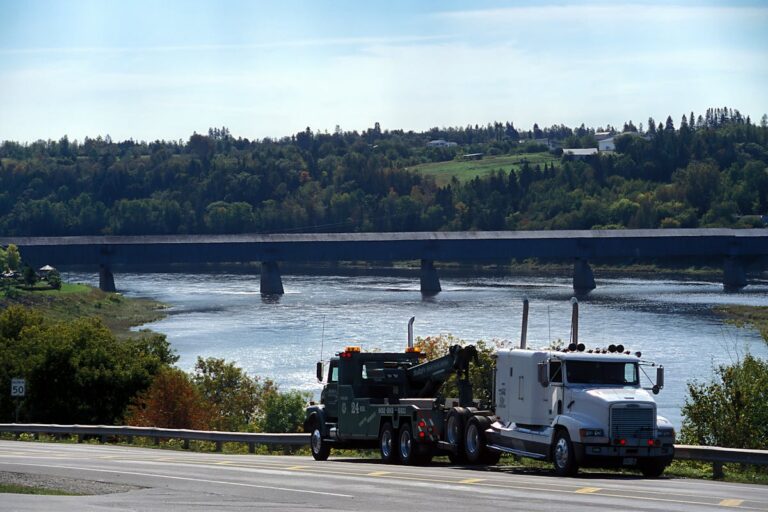The intricate relationship between mechanical failures and liability in the context of vehicular accidents raises several legal and ethical questions. Does a brake failure exonerate the driver completely, or does the ultimate responsibility still lie with them? Where does the manufacturer’s liability begin and end in cases of faulty or defective parts? As we examine these questions, the complexity of determining fault in such circumstances becomes apparent, and the potential impact on legal proceedings and insurance claims is profound.
Understanding Vehicle Mechanical Failures
While it may initially seem straightforward, understanding vehicle mechanical failures requires an extensive knowledge of various automotive components and their functions. It is crucial to comprehend the intricate nature of an automobile’s design and the synergy between its parts for seamless operation.
Engine diagnostics play a pivotal role in identifying potential issues that may lead to mechanical failures. This intricate process involves a thorough analysis of the engine’s computer system, which controls and manages the vehicle’s operations. Anomalies in the data can indicate potential problems, such as malfunctions in the ignition system, fuel injector performance, or engine performance, which could lead to mechanical failures if not addressed promptly.
Safety inspections are another critical aspect of preventing mechanical failures. These inspections involve thorough checks of all vehicle components, including brakes, tires, lights, and steering systems. Regular safety inspections can identify wear and tear that may escalate to a mechanical failure over time.
Common Types of Mechanical Failures
There are numerous instances of mechanical failures that may occur in a vehicle, with some of the most common being brake system failures and tire or wheel malfunctions. The failure of brake systems can lead to a decreased ability to control the vehicle, greatly increasing the risk of accidents. On the other hand, malfunctions in tires and wheels can cause a sudden loss of vehicle stability, leading to potentially dangerous situations.
Brake System Failures
Brake system failure, a common yet perilous type of mechanical malfunction, often forms the crux of accident investigations. This type of failure can occur due to several factors, including poor brake maintenance and flawed brake design.
Neglecting brake maintenance is a primary cause of brake system failures. Over time, brake parts wear down and need to be replaced. However, if ignored, these worn parts can cause the brake system to malfunction, leading to slower stopping times and potentially, accidents. Regular maintenance, involving the inspection and replacement of brake pads, rotors, and fluid, is vital to guarantee the best functioning of the brake system.
Faulty brake design can also contribute to brake system failures. If a brake system is poorly designed, it may not function as required under all driving conditions. It could be susceptible to overheating or may fail to provide the necessary stopping power. Manufacturers have a responsibility to design and produce reliable brake systems. If an accident occurs due to a brake design flaw, the manufacturer could potentially be held liable.
Tire and Wheel Malfunctions
Surprisingly, tire and wheel malfunctions are among the most common types of mechanical failures leading to vehicular accidents. These occur due to a variety of reasons and profoundly influence the safety, control, and overall performance of vehicles. The occurrence of tire blowouts and improper wheel alignment are two prime examples of such malfunctions.
Tire blowouts occur when a tire suddenly loses air pressure, causing it to burst. This can happen due to several reasons, including excessive wear, high temperatures, or under-inflation. Blowouts greatly affect the control of the vehicle, often leading to dangerous situations or accidents.
On the other hand, improper wheel alignment is a less dramatic but equally hazardous malfunction. Misalignment can cause uneven tire wear, poor vehicle handling, and decreased fuel efficiency. It can also cause the vehicle to pull to one side, leading to potential collisions if not rectified in time.
In the context of liability, it is vital to note that these malfunctions can be due to the neglect of vehicle owners or manufacturer flaws. Consequently, determining liability in such cases requires a detailed examination of the vehicle’s maintenance history and an expert analysis of the malfunction.
Investigating Mechanical Failures Post-Accident
Initiating an investigation into mechanical failures after an accident is an essential step in determining liability. The process involves meticulous post-accident inspections and an extensive analysis of the vehicle’s components. This detailed examination helps identify potential failures that may have contributed to the accident.
Post-accident inspections are key to unravelling the mystery behind mechanical failures. They involve a complete and thorough review of the vehicle’s mechanical systems, including the engine, transmission, brakes, tires, and other vital components. Specialized equipment and trained experts are often employed in these inspections to detect and diagnose any mechanical issues that may have gone unnoticed pre-accident.
Failure documentation is another integral part of the investigation. This involves recording and cataloging every identified failure, irrespective of its perceived relevance to the accident. The documentation process includes not just the recording of failures, but also the collection of photographic evidence, detailed notes about the failure’s nature, and the component’s operational history.
The objective of these processes is to construct a thorough and accurate picture of the vehicle’s mechanical state at the time of the accident. This information forms a vital part of determining liability and can greatly impact the outcome of any subsequent legal proceedings.
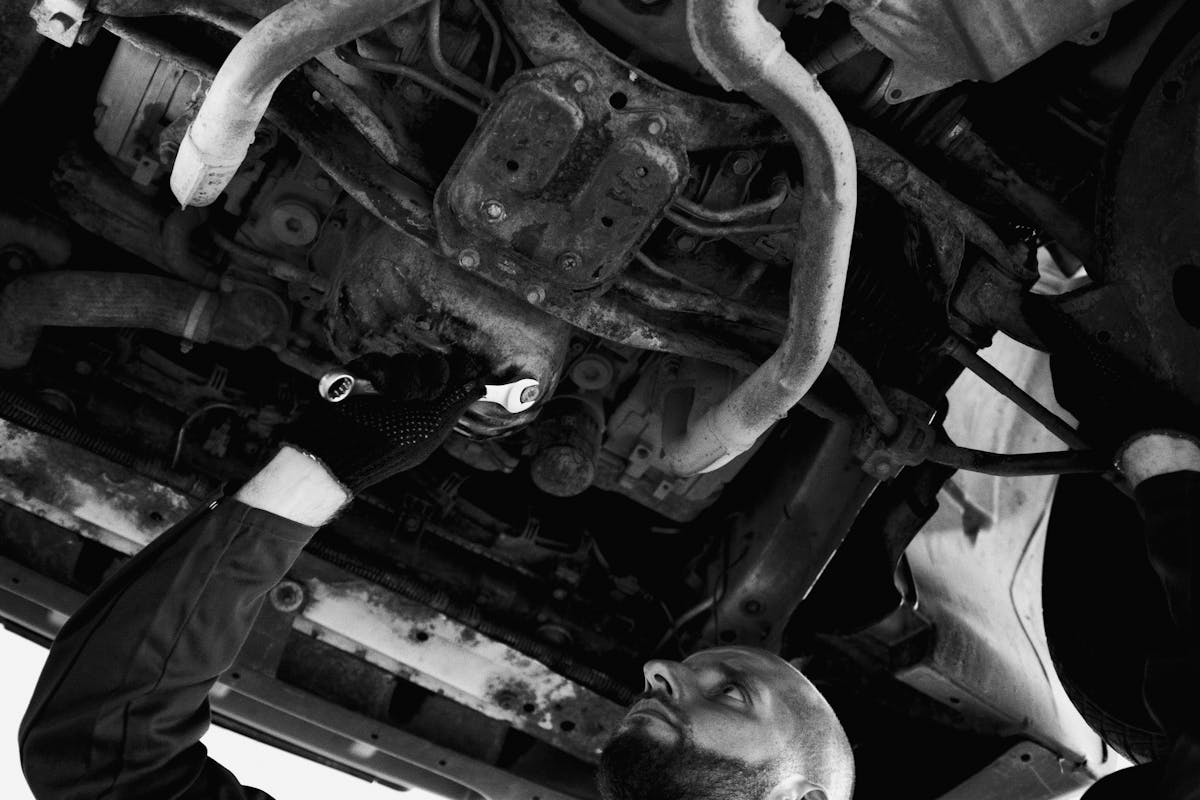
Impact of Mechanical Failures on Liability
Mechanical failures in vehicles can greatly affect liability determinations in accident cases. The extent of the manufacturer’s liability can be influenced by the nature and cause of the failure, particularly if it can be traced back to faults in the production process or design flaws. Conversely, if the failure was due to improper maintenance or negligence on the part of the vehicle’s owner or operator, liability may shift accordingly.
Determining Fault in Accidents
In the complex landscape of accident liability, the role of mechanical failures often emerges as a significant determinant of fault. The intricate process of fault determination is multi-faceted, involving not only driver actions, but also the condition of the vehicle at the time of the accident.
Accident analysis often includes a thorough investigation into potential mechanical failures. The question that arises is: would the accident have occurred if the vehicle was in perfect working order? If the answer is no, a mechanical failure is likely to be a contributing factor to the accident, which may shift or distribute the fault.
For instance, if brakes fail and cause a collision, the owner of the vehicle could be held partially or entirely at fault for failing to maintain the vehicle properly. However, if the brake failure is due to a manufacturing defect, the liability may shift to the manufacturer. Another consideration is if the vehicle owner was aware of the defect or not, which can also influence fault determination.
Manufacturer’s Liability for Failures
Shifting focus to the domain of manufacturer liability, it’s important to evaluate how mechanical failures can impact this aspect of accident liability. Manufacturer responsibility in accidents often arises due to product defects. Mechanical failures can be a direct result of such defects, leading to accidents and subsequent liability.
Manufacturer responsibility is dictated by three key factors: – The product was defective when it left the manufacturer’s control – The product was used in the intended manner – The defect caused the accident
When these conditions are met, the manufacturer can be held liable for any resulting accidents due to their product defect. This is irrespective of the level of care exercised in the production of the product. In such cases, the injured party is not required to prove negligence on the part of the manufacturer.
Maintenance Negligence and Liability
While considering the impact of mechanical failures on liability, one cannot overlook the notable role of maintenance negligence. This aspect plays a key role in determining who is at fault in an accident. Maintenance schedules and repair records can shed light on this issue.
Maintenance schedules, when strictly adhered to, can considerably reduce the risk of mechanical failures. However, negligence in following these schedules can lead to a higher likelihood of mechanical failures. This is often seen in cases where parties fail to carry out routine checks and services, leading to malfunction and subsequent accidents.
Similarly, repair records can serve as substantial evidence in liability determination. A thorough record of repairs can prove the due diligence of an owner in maintaining the vehicle, thereby reducing their liability. Vice versa, an absence or inconsistency in these records can be viewed as negligence, increasing liability.
Therefore, maintenance negligence can greatly influence the assignment of liability in the case of an accident. It is essential for owners to adhere to maintenance schedules and keep accurate repair records to not only promote safety but also minimize potential liability. It underlines the adage that prevention is better than cure, especially when it comes to mechanical failures and subsequent liabilities.
Legal Implications of Mechanical Failures
Mechanical failures can have serious legal consequences, particularly in cases involving accidents. When a mechanical failure leads to an accident, it can trigger a complex web of liability issues. The legal standards applied in these instances hinge on a variety of factors, including the nature of the failure, who is responsible for maintenance, and the results of mechanical diagnostics.
Mechanical diagnostics play an essential role in determining the cause of failure and, therefore, the potential liability. They provide critical evidence in legal disputes, serving to corroborate or refute claims of negligence or product defects.
The legal implications of mechanical failures are multifaceted. They can include:
- Product liability claims against manufacturers for defective components
- Negligence claims against service providers for improper maintenance
- Personal injury or wrongful death lawsuits from accident victims
These legal standards and potential consequences underscore the importance of regular maintenance and thorough mechanical diagnostics. Failure to meet these standards can not only lead to mechanical failures but also expose individuals or businesses to significant legal liabilities. Accordingly, understanding these implications is essential for everyone involved in the operation, maintenance, or manufacturing of mechanical devices.
Role of Insurance in Mechanical Failure Cases
Addressing the role of insurance in cases of mechanical failure requires a keen understanding of various insurance policies and their coverage. Insurance carriers play a significant role in determining the extent to which damages could be covered under specific scenarios.
Primarily, two types of insurance policies come into play: Extensive and Collision coverage. The former generally covers damages not caused by a collision, including mechanical failures. The latter pertains to damages resulting from an accident, regardless of fault. However, ambiguity often arises when distinguishing between a mechanical failure that caused an accident and a mechanical failure that resulted from an accident.
Liability coverage, another vital aspect, is designed to cover the costs associated with the other party’s property damage or bodily injuries if you are found at fault in an accident. In most jurisdictions, it is mandatory. Yet, it does not typically cover the policyholder’s own vehicle damages.
Understanding these nuances is essential for both policyholders and victims of accidents involving mechanical failures. An extensive analysis of the insurance policy, the nature of the mechanical failure, and the specifics of the accident is necessary to determine liability and coverage.
Case Studies: Mechanical Failures and Liability
To explore deeper into the complexities of mechanical failures and liability, it is insightful to examine some real-world case studies. These cases provide a concrete context to understand how mechanical failures can affect liability outcomes.
One striking case was a 2018 accident in Los Angeles, where a bus driver lost control due to brake failure, causing substantial injuries to passengers. Subsequent investigations revealed the bus company’s negligence in maintaining the brakes, leading to a hefty settlement for the victims.
A second case involved a New York taxi driver whose steering system failed, causing a collision. The court assigned partial blame to the driver, who ignored previous warning signs of a mechanical issue. The taxi company was also held partially liable for failing to regularly inspect their vehicles.
Lastly, a 2017 Texas case saw a family suing a car manufacturer after a fatal accident due to a faulty ignition switch. The court held the manufacturer liable, emphasizing the company’s responsibility to guarantee the safety of their products.
In conclusion, these case studies illustrate: – Mechanical failures can greatly influence liability outcomes – Both individuals and companies can be held accountable for accidents resulting from mechanical failures – Regular vehicle maintenance and prompt response to mechanical issues are essential to avoid legal liabilities.
Frequently Asked Questions
What Maintenance Records Should I Keep to Prove Regular Vehicle Upkeep?
To demonstrate regular vehicle upkeep, maintain detailed maintenance logs, outlining all conducted services. Keep all service receipts as evidence of repairs or replacements, documenting the extent of care given to your vehicle’s mechanical wellbeing.
Can I Sue the Vehicle Manufacturer for a Mechanical Failure That Caused an Accident?
Yes, you can sue the vehicle manufacturer for a mechanical failure that caused an accident. This falls under product liability law, where manufacturer responsibility for faults in their vehicles can lead to liability for accidents.
What Role Does a Vehicles Warranty Play in a Mechanical Failure Liability Case?
A vehicle’s warranty coverage can greatly influence a mechanical failure liability case. If the malfunction falls within warranty terms, the manufacturer might bear liability, potentially affecting the legal outcome and compensation awarded.
Can Product Recalls Affect the Outcome of a Mechanical Failure Lawsuit?
Yes, product recalls can greatly influence the outcome of a mechanical failure lawsuit. The recall implications reveal a recognized issue with product safety, potentially shifting liability towards the manufacturer for accident-related damages.
How Does a Mechanics Error Factor Into the Liability of a Mechanical Failure Accident?
A mechanic’s error can greatly impact liability determination in a mechanical failure accident. If negligence is proven, the mechanic could be held partially or fully responsible for damages, altering the liability landscape greatly.
